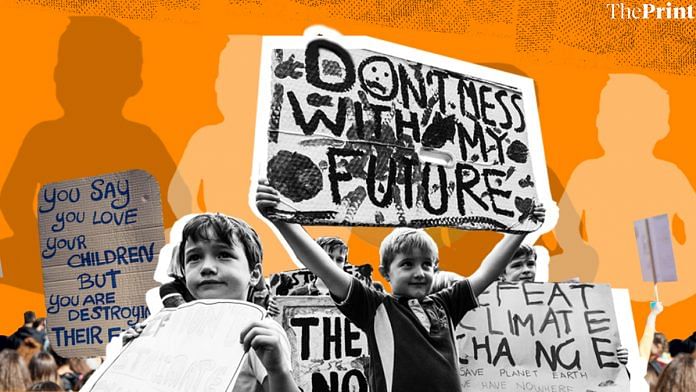- Experts at Imperial College London have warned ‘eco-anxiety’ is growing among children.
- More than 45% of young people in a survey of 10 countries said their feelings about climate change “negatively affected their daily life and functioning”.
- Building optimism through reliable information on climate adaptation efforts is one way to allay fears, say the experts.
Images of wildfires scorching trees, hurricanes flattening houses and flash floods upturning cars are the very real – and more frequent – signs of the impact of climate change.
And they are impacting young people’s mental health.
Two experts from Imperial College London’s Ethnicity and Health Unit have warned that eco-anxiety – “the chronic fear of environmental doom” – is rising in children.
“The mental health impacts of the climate crisis have profound implications,” write Mala Rao and Richard Powell in a blog for the British Medical Journal.
“Neglecting the effects of increasing eco-anxiety risks exacerbating health and social inequalities between those more or less vulnerable to these psychological impacts. The socio-economic effects – as yet hidden and unquantified – will add considerably to the national costs of addressing the climate crisis.”
Who does it affect?
Rao and Powell point to several studies highlighting how widespread eco-anxiety has become globally.
Almost two-thirds of 10,000 16-25 year-olds in 10 countries were “very or extremely worried” about climate change in a study published in The Lancet in September, while 84% were at least moderately worried.
Over half felt “sad, anxious, angry, powerless, helpless and guilty”, and more than 45% said their feelings about climate change “negatively affected their daily life and functioning”.
The researchers wrote: “Climate change and inadequate governmental responses are associated with climate anxiety and distress in many children and young people globally. These psychological stressors threaten health and well-being, and could be construed as morally injurious and unjust. There is an urgent need for increases in both research and government responsiveness.”
What are the symptoms of eco-anxiety?
In November 2020, the UK’s Royal College of Psychiatrists (RC Psych) found 57% of child and adolescent psychiatrists were seeing children and young people distressed about the climate crisis and the state of the environment.
The RC Psych says that while eco-anxiety or eco-distress is not a diagnosis or mental illness, common signs to look for include: low mood, helplessness, anger, losing sleep, panic and guilt.
“Feeling distressed or anxious about the world is normal and shows that young people care about the planet, but sometimes these feelings can be overwhelming and hard to deal with, especially at a young age,” it says.
Psychotherapist Caroline Hickman goes one step further, calling eco-anxiety a “healthy response to the situation we are facing” because it shows awareness of the crisis. She says it can also be seen as being ‘eco-empathetic’, or ‘eco-compassionate’.
What can parents and carers do to support young people?
The RC Psych website offers resources for parents and carers to help children and young people manage their eco-anxiety and stop them from becoming overwhelmed.
It suggests:
- Listening to children and young people and taking their feelings seriously.
- Explaining to them that their feelings make sense and are a sign they are a caring person.
- Spending time in nature as a family, such as planting seeds or taking a walk.
- Working out your family’s carbon footprint and come up with ways to reduce it.
- Supporting them to take action to feel more in control, more hopeful and more resilient. This could be connecting with groups of young people (either in your local area or online) who have the same concerns about the environment.
- Reminding your child or young person there are lots of people working on solutions that will make the world happier, healthier and safer.
As Rao and Powell write: “The best chance of increasing optimism and hope in the eco-anxious young and old is to ensure they have access to the best and most reliable information on climate mitigation and adaptation.”
This article was originally published on the World Economic Forum (WEF). You can read it here.
Also read: 85% world population inhabit areas directly affected by human-induced climate change, study says






